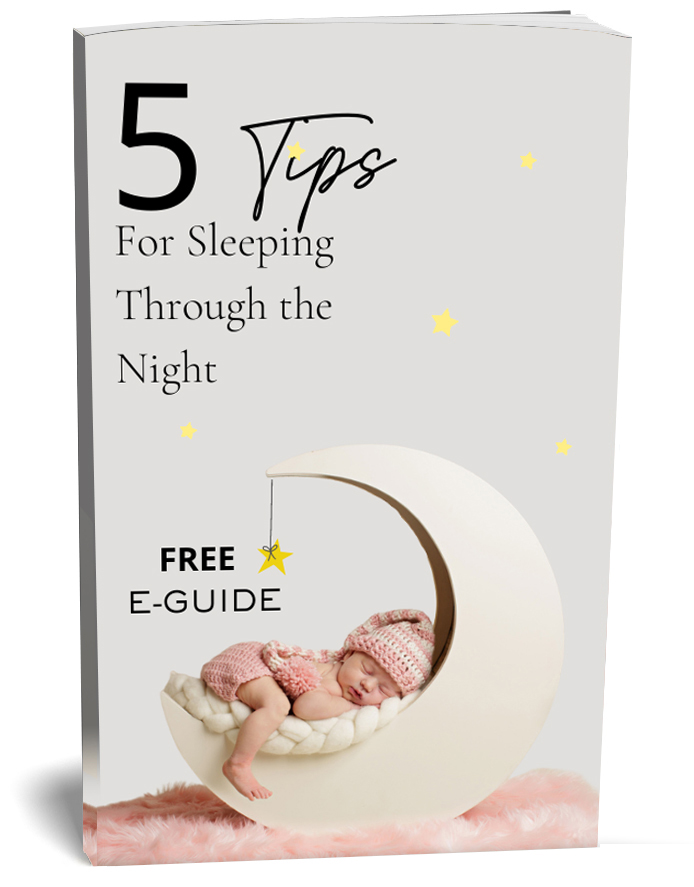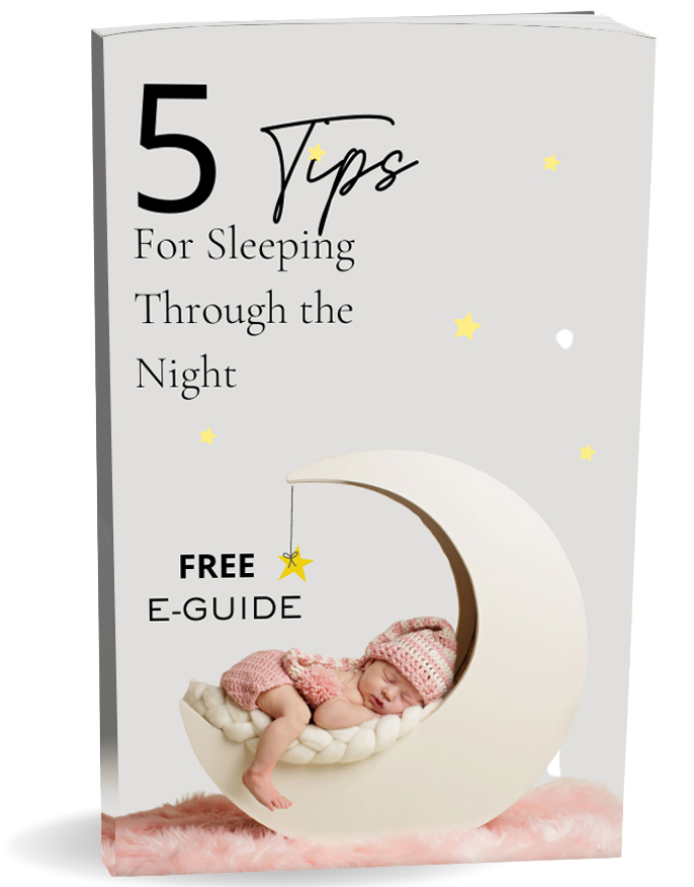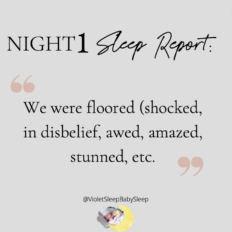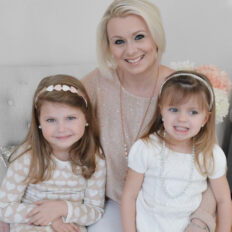
7 Ways to Manage Baby Sleep Associations
Sleep really is a science. So if you’re having trouble trying to connect the dots with baby sleep associations, you’re not alone. People go to school for this – so you should expect yourself to know it right off the bat! Today we’re diving into why sleep associations are crucial for your baby to develop healthy sleep habits: what they are, how they form, and my tips for managing them to get the best sleep possible.
What Are Baby Sleep Associations?
Sleep associations are things your baby relies on to fall asleep or stay asleep.
These can be physical items, like a pacifier or a specific blanket, or actions, such as rocking or nursing. While these associations can be comforting for your baby, they can sometimes become crutches that make it harder for them to fall asleep or stay asleep on their own.
Think of sleep associations as cues or signals that tell your baby it’s time to sleep. When these cues become deeply ingrained, your baby may struggle to sleep without them, which can lead to frequent night wakings or difficulties with bedtime.
Now, it’s important to note that these associations could be positive or negative. You definitely DON’T want your newborn to have a sleep association with a stuffed animal or a toy that could be a suffocation hazard. But if your baby develops an association to sleep and dim lighting, that’s only going to help at bedtime!
How Do Sleep Associations Form?
Sleep associations often form naturally as part of your baby’s sleep routine. For example, if you always rock your baby to sleep, they might start to associate rocking with falling asleep. Or, if your baby is used to having a pacifier in their mouth to fall asleep, they may struggle to sleep without it.
Over time, these associations become a key part of your baby’s sleep habits. While they start as helpful tools, they can become problematic if they prevent your baby from learning how to self-soothe or fall asleep independently.
Strategies for Managing Baby Sleep Associations
Managing sleep associations involves gradually helping your baby learn to fall asleep without relying on specific props or actions. Here are some strategies to guide you through this process:
1. Gradually Reduce the Props
If your baby relies on a pacifier, bottle, or other items to fall asleep, try gradually reducing their use. For example, if you’re using a pacifier, try limiting its use to JUST bedtime. Slowly decrease the frequency of offering the pacifier until your baby learns to fall asleep without it.
2. Implement a Consistent Bedtime Routine
Establishing a consistent bedtime routine helps signal to your baby that it’s time to wind down and prepare for sleep. Create a calming routine that doesn’t rely on specific props, such as a warm bath, gentle rocking, or a quiet story. Over time, this routine can become a strong sleep cue that helps your baby fall asleep independently.
3. Teach Self-Soothing Techniques
Encouraging your baby to self-soothe is an important step in managing sleep associations. Allow your baby a few minutes to try to settle themselves before intervening. Gradually increase the time you wait before offering comfort. This helps your baby learn how to calm themselves and fall back asleep without your help.
4. Offer Comfort Objects
If your baby needs a comfort object, such as a soft blanket or a small toy, make sure it’s safe and age-appropriate. Introduce the comfort object as part of the bedtime routine and use it consistently. This can provide a sense of security and help your baby feel more comfortable falling asleep on their own.
5. Gradually Fade Out Sleep Associations
Instead of abruptly removing sleep associations, try fading them out gradually. For example, if you’ve been rocking your baby to sleep, start by reducing the amount of rocking each night until your baby learns to fall asleep with minimal assistance.
6. Be Patient and Consistent
Changing sleep associations takes time and patience. Be consistent with your approach and try not to revert to old habits if your baby resists. Consistency helps reinforce new sleep habits and makes the transition smoother for your baby.
7. Encourage Daytime Sleep
Ensure your baby is getting enough sleep during the day. Being overly tired can make it harder for your baby to fall asleep at night and may lead to more reliance on sleep associations. Be sure to establish a consistent nap schedule to help your baby stay well-rested.
When to Seek Professional Help for Baby Sleep Associations
While managing sleep associations can often be done at home, there are times when it might be helpful to seek professional help:
- If your baby is consistently struggling to sleep without certain props or actions and you’re unsure how to proceed.
- If you’ve tried various strategies without success and your baby’s sleep issues are affecting their mood or behavior.
- If you suspect underlying issues, such as sleep disorders or medical conditions, that might be impacting your baby’s sleep.
A baby sleep consultant can provide personalized support and guidance to address specific sleep challenges and help your baby develop healthy sleep habits.
There is no shame in getting extra help for your little one. If you would like to chat about my baby sleep consultant packages, you can check out more information right here.
And remember, every baby is unique, and finding the right approach may take some time. If you need additional support with baby sleep associations, don’t hesitate to reach out! With a little patience and persistence, you’ll be on your way to helping your baby enjoy restful, uninterrupted sleep.



















